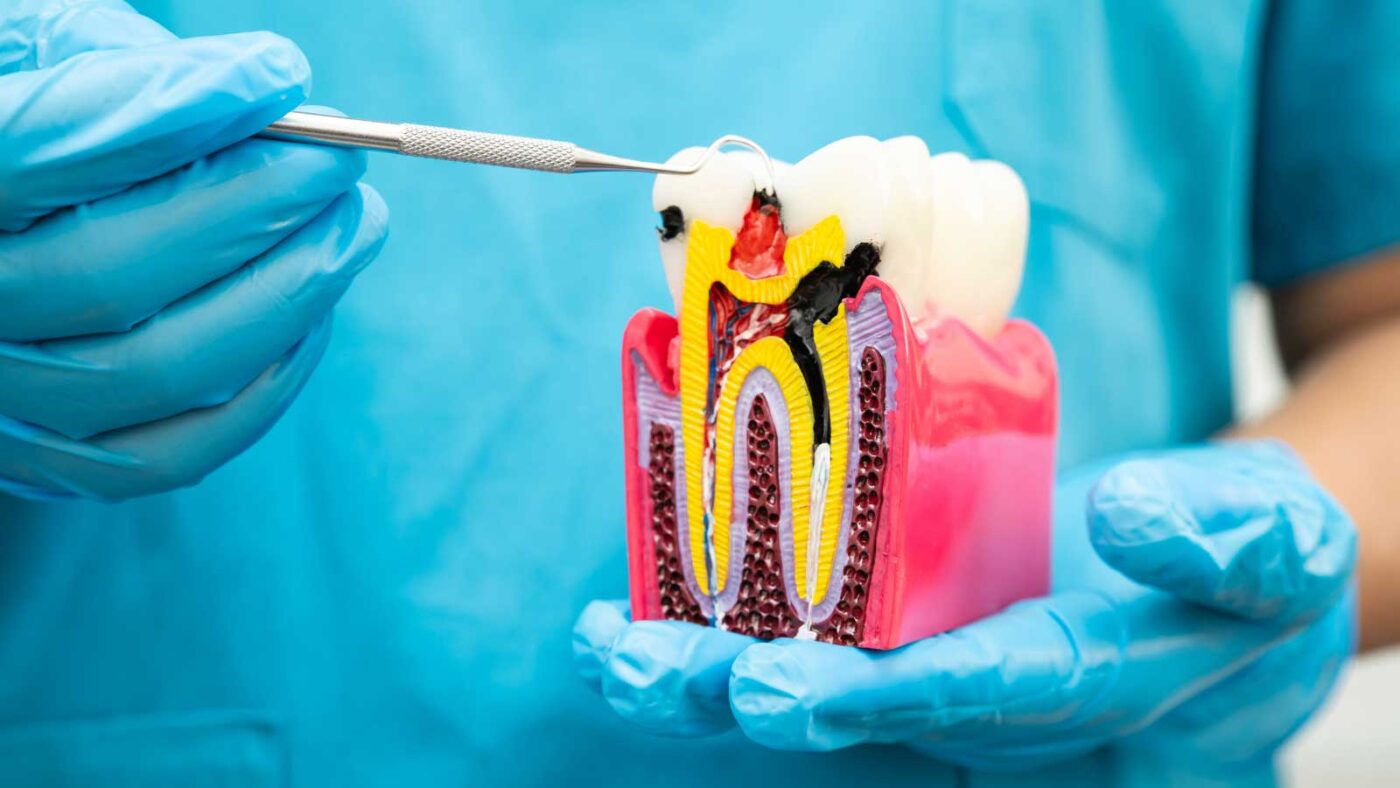Can a Root Canal Be Retreated Twice? What Endodontists Want You To Know

A tooth that has been treated and starts aching again can be frustrating. You might have invested time, money, and patience into fixing it, only to feel familiar discomfort return. When the pain or swelling resurfaces after a root canal, it raises genuine concern, especially when you’ve already had retreatment once before.
Many patients in this situation wonder if there’s still hope to save the tooth. Questions arise quickly: Can the same tooth really withstand another procedure? Is a second retreatment worth it, or should you start considering other options? These concerns are valid and common among people facing ongoing post-treatment issues.
In this discussion, we’ll look closely at whether a root canal can be retreated twice and what endodontists actually recommend. You’ll gain a clear understanding of how specialists evaluate failed treatments, what comprehensive root canal treatment involves, and what realistic outcomes to expect from multiple retreatments.
Table of Contents
- What Is a Root Canal Treatment?
- Can a Root Canal Be Retreated Twice? (Yes–Under the Right Conditions)
- What Endodontists Say About Performing Multiple Root Canal Retreatments
- Success Rates and What You Can Realistically Expect
- Structural and Anatomical Challenges in Multiple Retreatments
- Risks and Complications of a Second Retreatment
- When Is a Second Root Canal Retreatment Not the Best Option?
- How Renovo Endodontic Studio Helps Patients Needing Second Root Canal Retreatments
What Is a Root Canal Treatment?
A root canal treatment removes infection from inside a tooth and prevents further bacterial growth. Each tooth has a central space called the pulp chamber that contains nerves, blood vessels, and connective tissue.
When deep decay, cracks, or trauma expose the pulp to bacteria, it becomes inflamed or infected. The goal of the procedure is to eliminate the infection, clean the canal spaces, and seal them to prevent new bacteria from entering.
During treatment, an endodontist accesses the tooth, removes the infected tissue, shapes and disinfects the canals, and fills them with a biocompatible material. The tooth is then sealed and usually covered with a crown for protection.
A successful root canal preserves your natural tooth and restores normal function, allowing you to chew comfortably without pain or risk of spreading infection.
Can a Root Canal Be Retreated Twice? (Yes–Under the Right Conditions)
A root canal can be retreated more than once, depending on the condition of the tooth and the cause of the previous failure. Every time a root canal is redone, the endodontist must carefully assess whether the structure is still strong enough to withstand another procedure.
This involves assessing the amount of healthy dentin (the hard, yellowish tissue that forms the bulk of a tooth) remaining, the quality of previous fillings, and whether the infection has impacted the surrounding bone.
Here are the key points that determine if a root canal can be retreated twice:
- The tooth still has enough healthy structure to support another procedure.
- The root canals are accessible and not blocked by previous materials or posts.
- The surrounding bone shows no severe loss or ongoing infection.
- The prior failure was due to missed anatomy or reinfection, not an irreversible fracture.
- Advanced imaging, such as CBCT, confirms that retreatment is technically feasible.
- The patient maintains good oral hygiene and follows post-treatment care recommendations.
Retreating a root canal twice is complex but possible when the conditions are favorable. Endodontists use advanced tools to remove old materials, clean more thoroughly, and reseal the canals with greater precision.
Before proceeding, they evaluate how long a retreated root canal lasts based on your specific case. With proper care and restoration, a successfully retreated tooth can last for many years, sometimes even for the rest of its life.
What Endodontists Say About Performing Multiple Root Canal Retreatments
Endodontists agree that retreating a root canal twice can be effective, but it requires a precise evaluation and realistic expectations. The decision depends on why the previous treatment failed and whether the tooth can still be restored.
To understand the factors that influence these decisions, it is helpful to consider success rates, anatomical limitations, risks, and potential alternatives.
Success Rates and What You Can Realistically Expect
A second root canal retreatment can still be successful, but the odds are generally lower compared to the first retreatment. Success depends on several factors, including the condition of the tooth, the source of the previous failure, and how quickly the issue is addressed.
When problems such as missed anatomy or inadequate sealing caused the failure, the chances of success tend to be higher. Before committing to another procedure, patients should understand what endodontists look for when evaluating the potential outcome.
Key factors that influence the success of a second retreatment include:
- The tooth’s remaining healthy structure
- The ability to access and thoroughly clean the canals
- The presence or absence of persistent infection
- The quality of the final restoration, especially the crown
- The patient’s oral hygiene and follow-up care
- The endodontist’s experience and use of advanced imaging
Patients should view second retreatments with realistic expectations. Even when successful, healing may take time, and mild discomfort during recovery is normal. Long-term success also depends heavily on proper restoration and consistent dental care.
While a second retreatment may not guarantee a permanent fix, it can preserve the natural tooth for many years and delay or prevent the need for extraction.
Structural and Anatomical Challenges in Multiple Retreatments
Each retreatment slightly alters the tooth’s internal structure, making the procedure more complex over time. Canals may become narrower, calcified, or more challenging to navigate, and the dentin walls gradually thin with each procedure. Endodontists use advanced imaging, such as CBCT scans, to evaluate these changes and identify hidden canals or unusual curvatures that may have contributed to previous treatment failures.
Key anatomical and structural factors that influence the possibility of multiple retreatments include:
- Thinner dentin walls increase fracture risk
- Calcified or narrowed canals that limit access
- Curved or complex canal anatomy
- Existing posts or materials that obstruct the canals
- Reduced structural stability after repeated cleaning
- The presence of undetected or previously missed canals
Because each treatment affects the tooth’s overall strength, endodontists must carefully determine whether retreatment is safe and predictable. If too much dentin is lost or the anatomy is too compromised, the tooth may not withstand another procedure. In these cases, alternative treatments may offer a more stable and long-term solution.
Risks and Complications of a Second Retreatment
A second retreatment is more technically demanding, increasing the risk of certain complications. Removing old filling materials, navigating narrow or fragile canals, and reshaping already treated spaces can put additional stress on the tooth. Patients may also notice temporary sensitivity or root canal pain after treatment.
While this can be part of the normal healing process, persistent or worsening symptoms may signal a deeper issue.
Common risks and complications associated with a second retreatment include:
- Instrument breakage during canal cleaning
- Root perforation caused by weakened tooth walls
- Incomplete removal of old filling materials
- Remaining bacteria in complex or curved canals
- Increased risk of cracks or fractures
- Longer healing periods due to repeated manipulation of the tooth
Many of these risks can be significantly reduced when the procedure is performed with modern tools and careful planning. Endodontists use microscopes, ultrasonic instruments, and 3D imaging to increase precision and maintain as much tooth structure as possible.
Clear communication and close monitoring help ensure that any unusual symptoms, especially ongoing root canal pain after treatment, are addressed promptly for the best possible outcome.
When Is a Second Root Canal Retreatment Not the Best Option?
Sometimes, a second retreatment may not offer the best long-term solution. If the tooth has significant structural damage, persistent infection, or bone loss, retreating it again may only provide temporary relief. Endodontists will often assess whether other options could achieve a more predictable outcome.
A common alternative is an apicoectomy, a minor surgical procedure that removes the tip of the root and seals it from the end. This approach works well when the infection remains confined near the root tip, but the rest of the canal system is stable. If the tooth structure is too compromised, extraction followed by a dental implant or bridge may provide better long-term function and comfort.
Choosing between retreatment and an alternative treatment depends on each patient’s situation. The goal is always to preserve natural teeth when possible, but not at the expense of stability or oral health. A careful evaluation and discussion with a skilled endodontist will help determine which option aligns best with your dental and overall health needs.
How Renovo Endodontic Studio Helps Patients Needing Second Root Canal Retreatments
At Renovo Endodontic Studio, we focus on precise, patient-centered care. We understand how discouraging it can feel to deal with pain after a root canal, especially when you’ve already gone through retreatment.
Our goal is to identify why the previous treatment failed and determine the best way to preserve your natural tooth safely and effectively.
Here’s how we can help:
- We use advanced 3D CBCT imaging and microscopes to detect missed or hidden canals.
- We remove old materials carefully using ultrasonic tools that protect your tooth structure.
- We use biocompatible sealers for a stronger and more durable result.
- We design personalized treatment plans that prioritize your comfort and long-term oral health.
Our team of trusted endodontists in the Chicagoland area utilizes evidence-based methods and advanced technology to ensure the best possible outcomes for every patient. We communicate clearly about your options, explain each step, and recommend solutions that truly benefit your case.
Our commitment is to restore your comfort, function, and confidence through meticulous care and lasting results.

